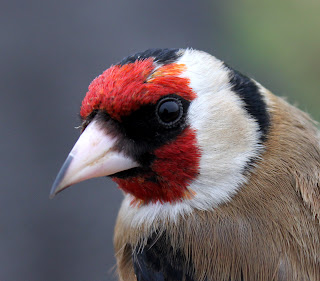I have fond memories of holidaying and birding in the wonderful, beautiful and unique India, a country where as a western birdwatcher trying to silently and unobtrusively observe unfamiliar species, I came to understand the meaning of the phrase “You are never alone in India”. It didn’t matter where I ventured, a walk across seemingly deserted paddyfield paths, checking the quietly flowing river bank for waders or wandering along an empty tideline, I quickly gathered an entourage of previously hidden ragamuffin children and adults eager to join in my strange pursuit, or better still look through binoculars that in a lifetime’s work they could never hope to own.
How nice then that today I received a parcel from my friends at Princeton University Press containing a book I’d been so looking forward to seeing, the second edition of Birds of India by Richerd Grimmett and Tim & Carol Inskipp. This book began life as a Helm Identification Guide in late 1988. Following this came a number of regional field guides such as Birds of Nepal, Birds of Northern India, Birds of Southern India and Birds of Sri Lanka. The first pocket guide to the Birds of India including Pakistan, Nepal, Bangladesh, Bhutan, Sri Lanka, and the Maldives, published in the UK as Birds of the Indian Subcontinent by Helm Field Guides first appeared in 1999. Some 13 years later this second hugely improved edition is now much appreciated by anyone with an interest in or experience of birding in the vast Indian subcontinent, and most certainly to anyone now planning a visit to any one of these enthralling places.
 Birds of India
Birds of India The Indian Subcontinent - Birds of India
The Indian Subcontinent - Birds of IndiaBirds of India now includes over 500 pages and 1,375 species, the latter figure encompassing all known vagrants. The illustrations use 226 colour plates which depict many distinct plumages, races and sub-species. Since the first edition of 1999, 73 new plates have been added and most existing plates reorganised, and as we expect from modern field guides, the text and distribution maps now appear opposite the illustrations. The text is comprehensively revised from the early edition and the detailed range maps totally updated to reflect current knowledge.
 Orioles - Birds of India
Orioles - Birds of India Bulbuls - Birds of India
Bulbuls - Birds of IndiaAgain, as we have come to expect, the text describes the bird and its ID, status, voice, and habitat. The distribution maps are colour-coded for resident, summer visitor, winter visitor, migratory visitor, and “known to be occasional, scarce or erratic”. On the whole the illustrations by a variety of artists are first-rate in portraying all the salient features, but perhaps lacking in reproductive quality on a number of pages where certain brown and black tones appear too dark, causing the illustration to look “flat” on the page rather than stand out to the reader.
The book’s introduction contains much useful information including sections about climate, main habitats, bird conservation in the region, and summaries of the various bird families covered by the guide. The latter is especially useful to newcomers to the region unfamiliar with groups like the bulbuls, broadbills and barbets, or that very difficult cult the babblers, groups I as a UK birder struggled with on my first visit to India.
 Bee Eaters - Birds of India
Bee Eaters - Birds of IndiaNear the front of the book are 4 pages devoted to itemised lists of taxonomic and name changes: proposed elevation to species status, proposed splits, or those species the authors consider warrant elevation to species status, or species where more research is required. All essential reading for students of taxonomy and those who like to keep bang up to date.
The four-page section headed “conservation” describes in more detail religious attitudes and traditional protection, threats, agricultural practices and conservation measures; the whole section makes for essential and thought provoking background reading, preferably before venturing forth with binoculars in the region. During five visits to India I observed in the people a total respect for wildlife, and as described in the book this is due to the spiritual influence of the Hindu and Buddhist religions in helping to conserve a rich, diverse and natural heritage. How this legacy will play out when India becomes a larger World Superpower remains to be seen, and in thirty years’ time the map on page 23 depicting the Birdlife International Important Bird Areas may have changed dramatically for the worse. I hope not, for all our sakes.
 The Book of Indian Birds - Birdlife international
The Book of Indian Birds - Birdlife internationalThis latest book on the birds of India becomes the one to own and the one use in the field, and although no one will find themselves alone in India, I can heartily recommend Birds Of India as a worthy companion for any birder planning to visit there, or indeed any part of the Indian subcontinent. It will also follow someone around by fitting into a rucksack or a large pocket. At £27.95 or $39.50 the book is available from
Princeton University Press or in the UK £31.50 from
A C Black where it is perhaps more correctly titled Birds of The Indian Subcontinent.
The book set me reminiscing about birding in India and Sri Lanka and from the bookshelf I dug out a book I bought in India in 1998, The Book of Indian Birds by Salim Ali. Marking a page I found a bill from the River Sal Restaurant, Goa. I remember it well, seated on the veranda overlooking the river as flights of egrets skimmed over the water to roost and a Smyrna Kingfisher played out the last rays of sunshine. Happy Birding Indian style.
 River Sal Restaurant, Goa
River Sal Restaurant, Goa The Book of Indian Birds by Salim Ali
The Book of Indian Birds by Salim Ali







































































